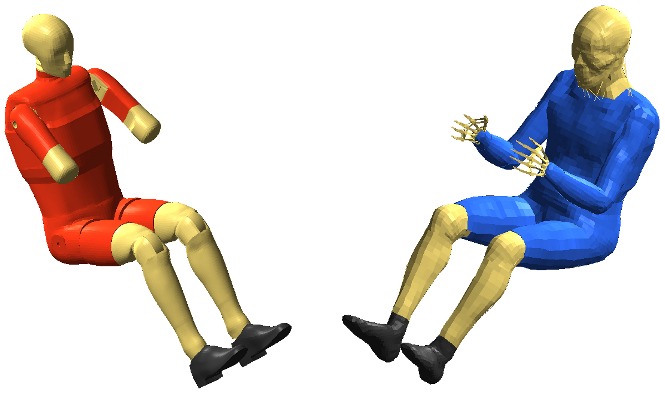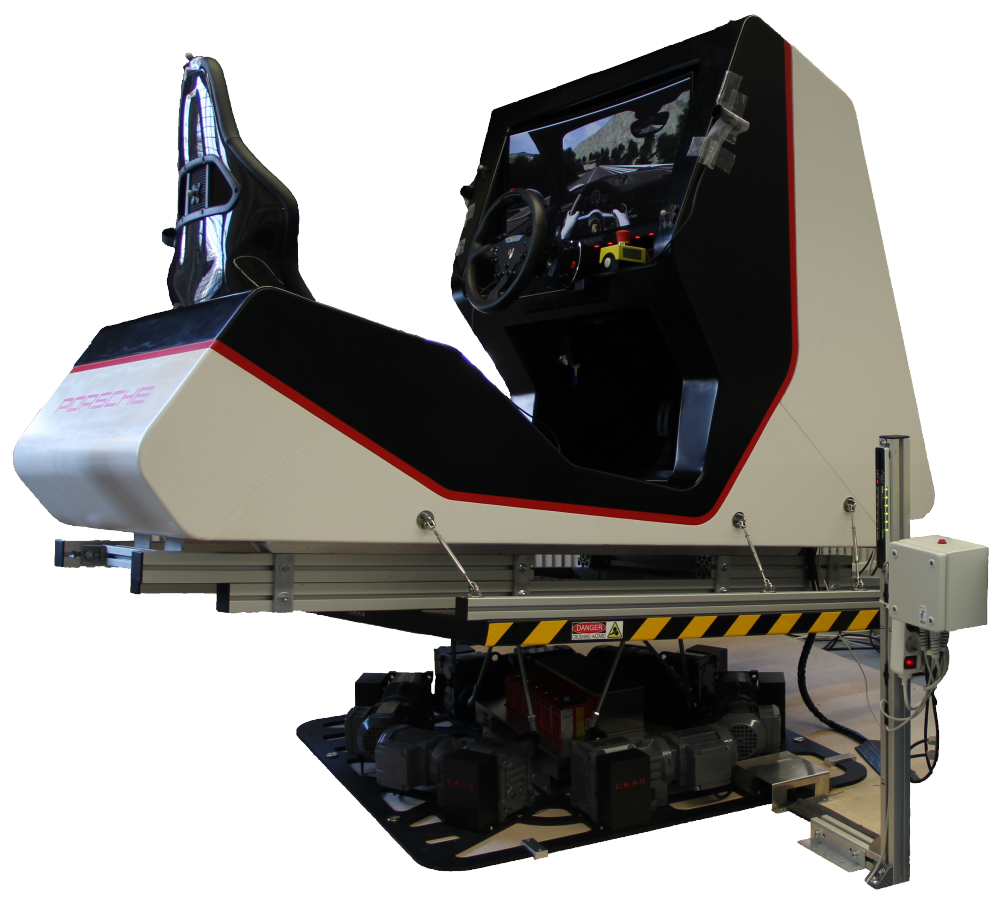 |
| ||||||||||||||||||||||||||||||||||
|
|||||||||||||||||||||||||||||||||||
|
Every year, 1.2 Million people loose their lives in traffic accidents. Therefore crash tests with dummy models are conducted since the 1950s. Laws and consumer ratings (e.g. the European NCAP) worldwide define numerous crash scenarios, which determine how new car models are tested prior to being authorized or receiving a certain consumer rating. These crash tests however are costly and expensive. Thus more and more simulations are used in all stages of the development to ensure the crash safety of a vehicle and to reduce the number of crash tests needed. Ideas about the next step away from hardware crash test are already being discussed such as the usage of simulation results in official safety ratings. Most of the simulations at the institute are run in LS-DYNA on two computer clusters at the SRC Simtech and the HLRS. Human Models for Crash AnalysisVarious dummy models are used in crash tests to assess the strain on the human body and to develop suitable occupant safety systems. Strain is put onto different regions of the body depending on the crash scenario, thus different dummy models are used in the analysis of e.g. a side or frontal impact. The biofidelity of a mechanical dummy is questionable, valid results can only be delivered in a limited range. For currently available dummy models this is the post-collision stage. In the field of occupant safety, simulations are replacing hardware crash test as well. In simulations the intermediate step of the mechanical substitute 'dummy' is no longer required. Instead the human body can be modeled directly. Our goal is to analyse and improve such human models with a focus on side impact scenarios. In addition, human models are especially suited for the development of active safety systems. This safety systems use the time period prior to contact, the so-called pre-crash stage, to actively reduce the risk of injury for the occupants. By modeling the most important muscles, the human models can be used to simulate the behavior of the human body in the pre-crash stage. Due to the longer time period available in this stage, the development of active safety systems is expected to cause a substantial increase in occupant safety. A cooperation with Jun.-Prof. Dr. Syn Schmitt exists within the SRC Simtech for the modeling of muscles. Accelerating the SimulationIn order to reduce the number of hardware crash tests, more and more simulations are deployed nowadays.
But due to the detailed models (several million degrees of freedom), even large computer clusters need too much computation time to test all the interesting parameters during the short development cycle in the automotive industry.
For this reason, we first employ a model order reduction (MOR), i.e. replacing the detailed model by a much simpler one, so that on the one hand the computation time for the explicit finite element solver is reduced significantly but on the other hand the model keeps most of its properties.
This is done with numerical tools like projection to a lower-dimensional subspace (reduced order model reduction). Validation of Human Models using a Driver-in-the-Loop Simulator
Data dealing with active car occupant behavior in different crash-scenarios are hardly available due to deficient number of adequate volunteer tests. There are different sorts of volunteer tests aiming to generate these important validation data.
Within the junior professor programm of the state Baden-Württemberg, the Institute of Engineering and Computational Mechanics implemented and applied a driving simulator for this goal.
The Driver-in-the-Loop simulator consists of a force-feedback steering wheel- and pedal unit, and an active moving platform with six envelopes.
With specific Motion-Cueing algorithms the electric power units of the platform can improve the driving experience by emulating the car conditions of the vehicle model through adequate platform movements. The force-feedback steering wheel and the bass-shaker at the backside of the seat promote the immersion of the subject.
The simulator offers a save environment to execute reproducible crash-scenarios including traffic interaction and allows the examination of the drivers' reactions in pre-crash scenarios.
Downloads
Contact
*) The 2001 Ford Taurus model has been developed by The National Crash Analysis Center (NCAC) of The George Washington University under a contract with the FHWA and NHTSA of the US DOT. |
| Last modified
11.9.2018 ( |


